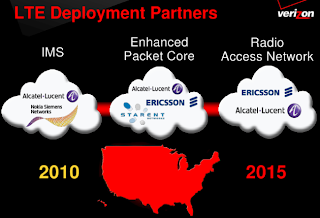
4G Technology Long-Term Evolution Thriving In Asia
Long-Term Evolution (LTE), the most sought after next-generation (4G) super-fast wireless communications technology is quickly gaining momentum in the Asia regions. The 4G wireless networks are aiming to cope with substantial demand for high-speed wireless data services and mobile video. Asia, especially the south and south-east part of this continent, contains the two largest emerging economies of the world, namely, China and India. Additionally, developed nations like Japan, South Korea, Taiwan, Singapore, and Philippines are also part of this subcontinent. As a result, the mobile services providers in this region often face increasing competition that forced them to upgrade their respective networks frequently.
NTT DoCoMo (DCM: 14.48 +0.11 +0.77%), the largest wireless service provides in Japan is likely to become the first carrier in Asia to deploy LTE network. DoCoMo is all set to commercially launch its LTE service from Dec 2010 and is using L.M.Ericsson’s (ERIC: 9.83 +0.02 +0.20%) LTE solutions. KDDI Corp., the second largest mobile operator in Japan, is in the process to implement LTE from end 2012. KDDI is using Motorola Inc (MOT: 7.75 -0.01 -0.13%) and NEC Corp’s LTE infrastructure.
China Mobile Ltd. (CHL: 48.397 +0.387 +0.81%), world’s largest mobile operator with respect to subscriber count, is also conducting several trial runs for its nationwide LTE deployment from end 2011. The company is using Motorola, Huawei Technology, and Ericsson’s technical solutions for LTE network. Singapore Telecommunications, the largest wireless carrier in Singapore with operations in Australia, Indonesia and the Philippines, also announced plans for LTE trials. The company has chosen Alcatel-Lucent (ALU: 3.77 0.00 0.00%) as its equipment vendor for the trials, which will begin in the first half of 2010 and take anywhere from six to nine months. Singapore Telecom will start multi-market LTE trial runs with the help of its partners like Optus, Globe Telecom, and Telkomsel, the wireless service division of P.T. Telekomunikasi Indonesia Tbk. (TLK: 40.52+0.04 +0.10%).
LTE offers several advantages over other 4G techniques like WiMAX, Ultra Mobile Broadband (upgrade of CDMA EV-DO) and Multi-input Multi-output (MIMO) Wireless LAN. This includes improvement in spectral efficiency, lower costs, and solid integration with other open wireless standards. LTE provides downlink and uplink peak rates of 100 Mbit/s and 50 Mbit/s respectively with RAN (radio access network) round-trip times of less than 10ms. LTE also supports flexible carrier bandwidth and both FDD (frequency division duplexing) and TDD (time division duplexing) on the same platform. Ability to incrementally increase speed and capacity are the major hallmarks for its acceptability to wireless carriers.
